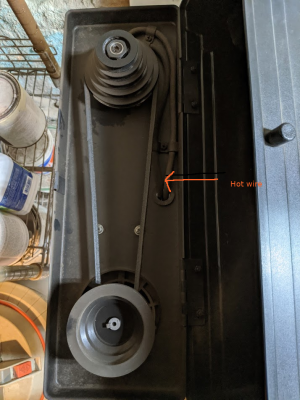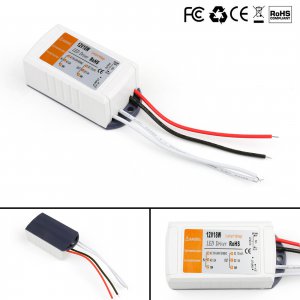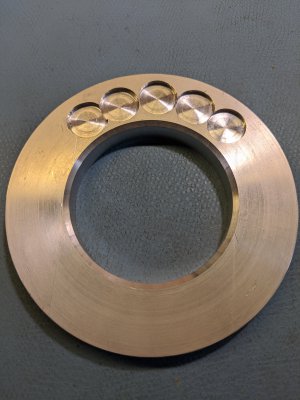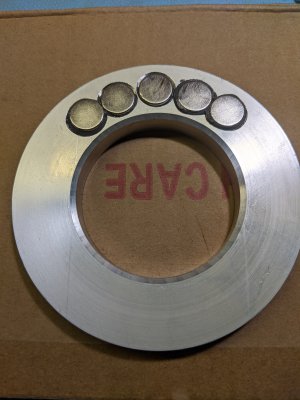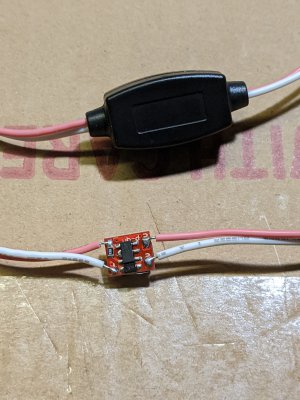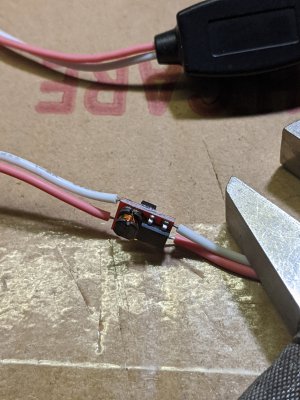Seems like those posts are gone... Ok, let's try again.
Reground the tool, by touching the bit to the belt sander. Didn't even have the tool hit the platen, just the belt for a brief second. It was enough to remove nearly all of the flat part. There only was a tiny spot on the right hand side that didn't get cut. Cutting edge has 14 degree relief. Honed with 325, 600, 1200 grit diamond cards. Flattened the corner along the cutting edge, so it wouldn't break off.
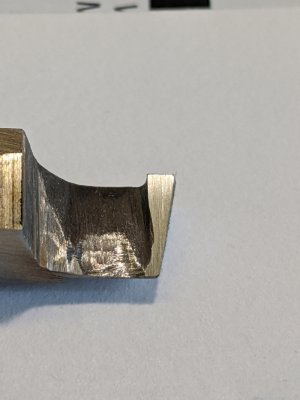
Used the parting tool to machine the grooves on the other side. Just flipped the disk over. Then used the super improved tool shown above to machine in the retaining lip. Here they are. Tool cut well. Workpiece remained cool.
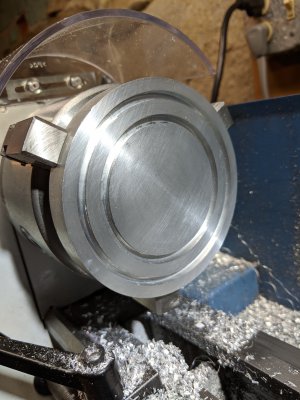
Then I bored out the center. Only minor casualty was the tips broke off the cheapo T8 tool when I tightened an aluminum insert in the boring bar. Fixed that later by touching the T8 tip to the belt sander. Also ordered a proper T8 screwdriver.
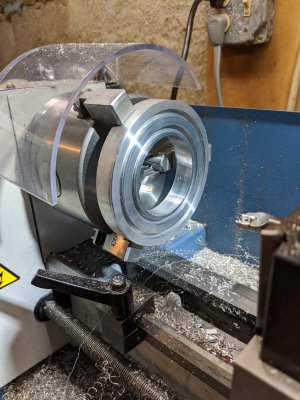
Next we did a fit check. First the outer ring, and then the inner.
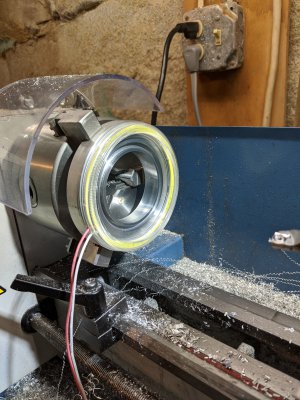
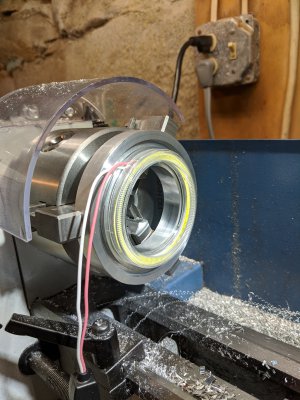
Hooray, they fit! Inner is a bit snugger than the outer, but it's good enough! I removed the part from the chuck and did a fit check on the drill press. Spindle passes through, but the workpiece needs a chamfer to fit a little better. Back in the chuck. While I was at it, I machined down the mis-machined slot (affectionately known as the practice slot ), and then put in the chamfer. Final thickness of the ring is 3/8". Yeah, I meant that, really, I did!
Then it was time to add some mouse holes in the LED rings for the wires to pass through. In the pictures above, the plastic edge was pressing on the wire insulation. Long term, that's not good. Used the edge of a rectangular needle file to cut some tiny slots for the wires to pass through. I then placed some kapton tape over the solder joints on the back of the LEDs to prevent shorting out. Assembled everything to get an idea of my progress.
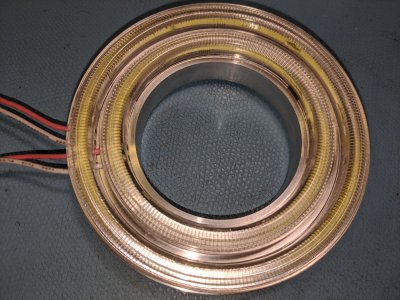
Hmm, that's not too bad. Couldn't stand it any longer, needed to light it up. Wired to a small LED power supply and there was light!
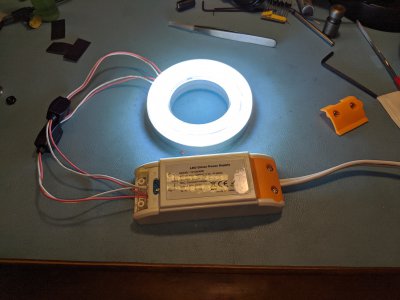
Woohoo!
What's left to do? Need to counterbore some holes in the backside of the ring. The holes are for N52 magnets. Only 5 12mm diameter magnets have direct contact with the underside of the drill press. These magnets are pretty strong, so I think it will work. There is a 0.030" gap between the back of the workpiece and the drill press. The magnets are 0.105" thick. So the counterbore needs to be about 0.075". I'll epoxy them in place. Guess I should counterbore a tiny bit more to allow for the epoxy. Now the wait begins - don't have the tooling. Tools on order, will have them and other toys(tools) within the week.
While I'm waiting, I'll figure out how to hide the power supply inside the drill press and wire in a switch. I hope to tap off power from inside the unit to power the lights. That way I won't consume another plug in my constrained shop. Considering that these LED lights consume less than 10W, I think it's pretty safe to do so.
Hopefully this post won't get eaten up by the great IP switchover...







